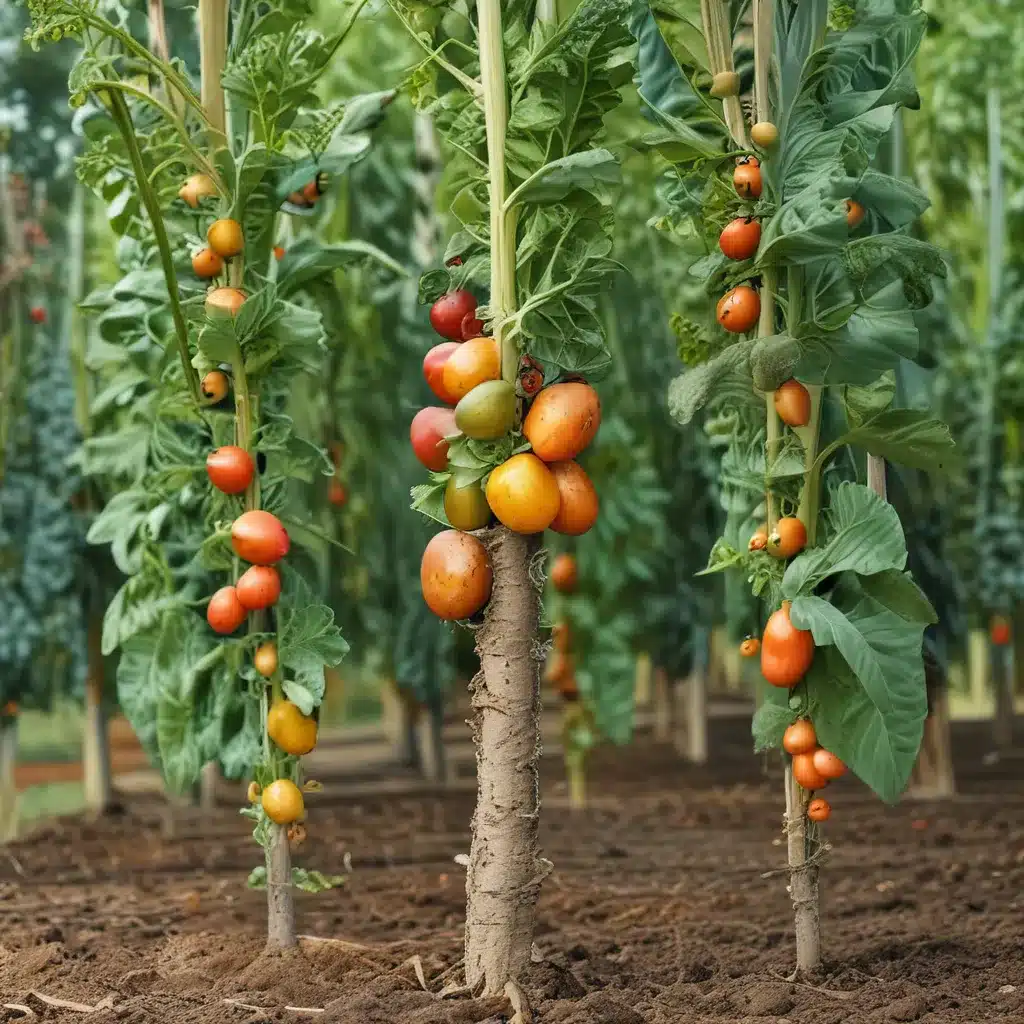
The Power of Rotation
As I stroll through the lush fields of Thornalppe CSA, I can’t help but marvel at the vibrant tapestry of crops before me. From the towering stalks of corn to the verdant beds of leafy greens, each plant seems to thrive in perfect harmony. The secret to this agricultural symphony? Crop rotation, my friends – the art of strategically arranging your plantings to create a delicate balance of nutrients, pest control, and overall farm resilience.
I’ll admit, when I first started working on this CSA, the idea of crop rotation sounded like something out of a textbook. But as I’ve delved deeper into the topic, I’ve come to see it as a true dance between nature and nurture, a carefully choreographed routine that keeps our soils healthy and our crops brimming with vitality.
Nurturing the Soil
At the heart of crop rotation lies the concept of soil health. You see, each plant has its own unique nutritional needs – some are heavy feeders, gobbling up nitrogen, while others excel at replenishing the soil with their nitrogen-fixing abilities. By rotating these crops in a strategic sequence, we can ensure that our soils are never depleted, but rather constantly rejuvenated.
Take our trusty friend, the oat. As the experts at SARE explain, oats are true nutrition scavengers, capable of taking up excess nitrogen, phosphorus, and potassium from the soil. By planting oats as a cover crop, we can effectively “clean up” any leftover nutrients from our previous cash crops, preventing them from leaching away and polluting our waterways.
But the benefits of oats don’t stop there. Their fibrous root system also helps to hold the soil in place, preventing erosion during those pesky shoulder-season gaps in our rotations. And as if that wasn’t enough, the oat residue left behind provides a mellow, weed-suppressing mulch – the perfect foundation for our next round of plantings.
Repelling the Pests
Crop rotation, however, is more than just a nutrient-balancing act. It’s also a crafty way to outsmart those pesky pests that would love nothing more than to munch on our hard-earned crops. By changing up the plants we grow from year to year, we can disrupt the life cycles of many common agricultural invaders, making it much harder for them to establish a foothold in our fields.
Take nematodes, for example – those microscopic worms that can wreak havoc on our vegetable crops. As the SARE team explains, rotating away from nematode-susceptible crops like wheat, rye, and triticale can effectively starve these pests, leaving them with nowhere to turn.
But the real magic happens when we start incorporating cover crops into the mix. Plants like oats and brassicas (think radishes and mustards) have been shown to release allelopathic compounds – natural herbicides, if you will – that can inhibit the growth of certain weeds and even suppress some soil-borne pathogens. By strategically including these cover crops in our rotations, we can create an inhospitable environment for many of our crop’s common adversaries.
Embracing the Unexpected
Of course, the world of crop rotation isn’t all sunshine and rainbows. There’s a certain element of the unexpected that keeps us on our toes, constantly adapting and fine-tuning our strategies.
Take, for instance, the case of my neighbor, Carmen Fernholz, a grain and hog farmer in Madison, Minnesota. Carmen has been using oats as a cover crop for years, but he’s found that the protein content can sometimes be a bit of a wild card. As SARE notes, oat hay can range anywhere from 12 to 25 percent protein, which can pose a potential metabolic threat to his milking cows if it becomes the primary forage.
Carmen’s solution? Underseeding his oats with a nitrogen-fixing legume, like clover or vetch. Not only does this help balance out the protein levels, but it also provides an added boost of nutrients for the next cash crop in the rotation. It’s a perfect example of how we have to stay nimble, always looking for ways to tweak and optimize our systems.
Reaping the Rewards
As I wander through the vibrant fields of the Thornalppe CSA, I can’t help but feel a sense of awe and gratitude for the hard work and careful planning that goes into maintaining this delicate balance. From the lush cover crops that smother weeds and nourish the soil to the diverse array of cash crops that thrive in perfect harmony, it’s a true testament to the power of crop rotation.
And the best part? The rewards just keep on coming. As the SARE team has found, farmers who embrace crop rotation can expect a 3% increase in their corn yields and a whopping 49% boost in soybeans after just five consecutive years of cover crop use. And in the drought-stricken year of 2012, those same farmers reported even greater yields – a 96% increase in corn and a 116% jump in soybeans.
But the benefits extend far beyond the bottom line. By nourishing our soils and creating an unfriendly environment for pests, crop rotation helps us reduce our reliance on costly and environmentally-damaging chemicals. It’s a win-win for both our wallets and our planet.
So, as you stroll through the fields of your own CSA or backyard garden, I encourage you to embrace the art of crop rotation. Experiment with different cover crop cocktails, mix and match your cash crops, and revel in the symphony of life that unfolds before you. After all, true agricultural harmony is just a rotation away.



